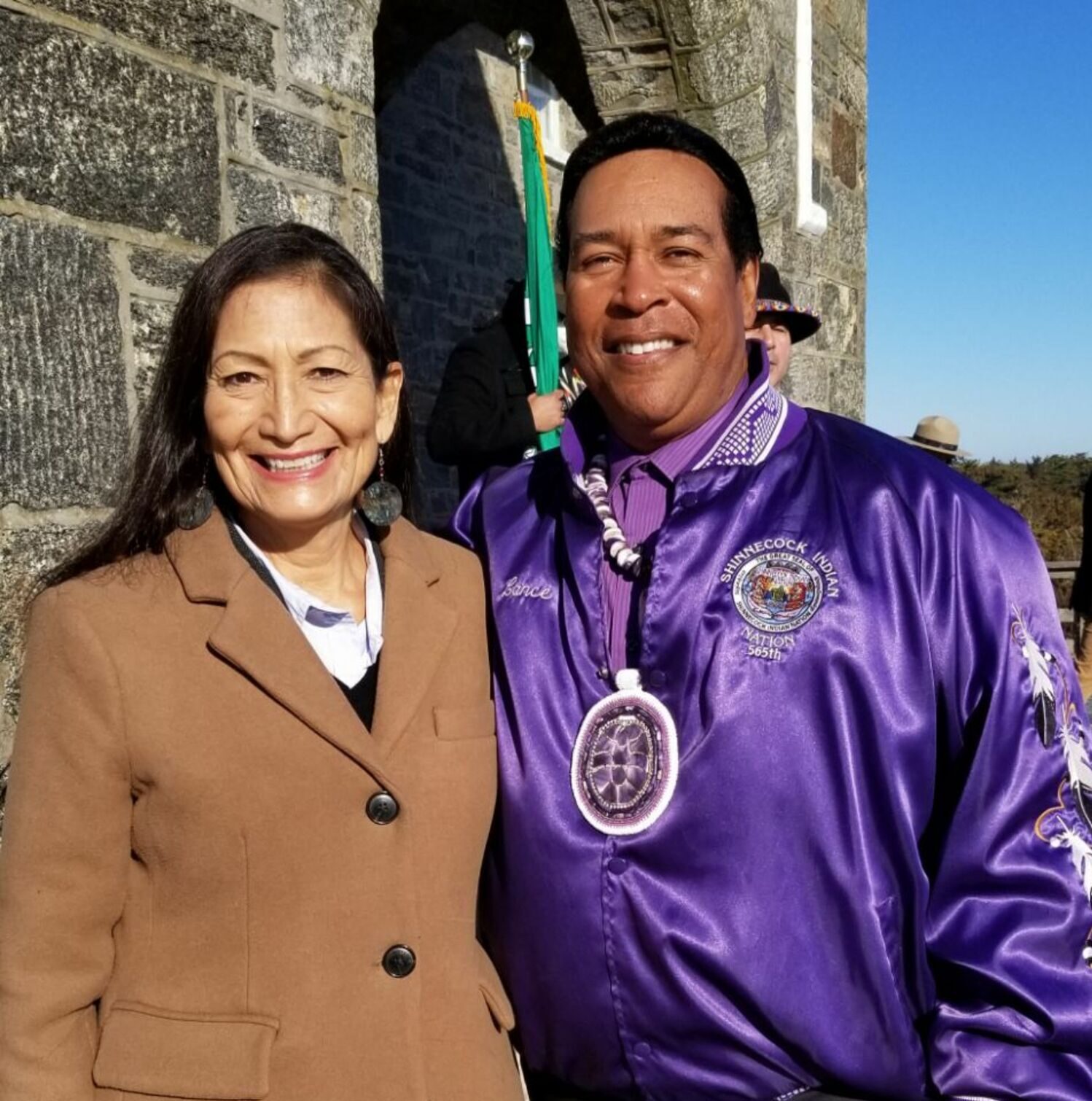
Lance Gumbs, a former Shinnecock Nation tribal trustee, is leading a coalition of Native American tribes from the East and West Coasts of the United States that are raising questions about how the federal government reviews and approves offshore wind farms — and are demanding more of a voice, and a cut of the financial benefits, in the process
“I was listening to stories from tribes from Maine to Virginia about the lack of meaningful consultation with the tribes, about the Biden administration talking about inclusion and co-management but not following through with the tribes on the East Coast,” Gumbs, who is the vice president of the National Congress of American Indians, said this week.
“There is a real disconnect between what the White House is saying, what the Department of the Interior is saying, and what [the Bureau of Ocean Energy Management] is doing,” he added.
Earlier this year, the coalition organized by Gumbs called for a moratorium on wind farm approvals in areas that could impact Native peoples, until more can be done to flesh out the potential negative impacts of the construction on the environment, on marine mammals and on tribes that depend on the sea and marine life for their livelihoods or tribal economies.
The moratorium got the coalition a meeting with Interior Secretary Deb Haaland — who is a Pueblo and the first Native American cabinet secretary in U.S. government history — to discuss the breakneck pace of wind farm planning and applications off the East Coast.
“We felt the meeting went nowhere,” Gumbs said. “We told her, we’re not here for a listening session — we’re here for actionable items. But it’s a directive from the White House, so she had nothing to give us, really.”
With just five turbines currently online along the entire East Coast and two wind farms under construction — including South Fork Wind, off Montauk, which will connect to land in Wainscott — the tribes are worried that there are potential impacts that are being glossed over or ignored in the haste of getting more projects through the approval process.
Wind farm development dozens of miles away could have negative fallout for coastal tribes like the Shinnecock, Gumbs said, and the federal review process has not proven to him that it is giving each proposal the due diligence of an in-depth, independent review. Instead, he believes the government is fast-tracking them for approval to meet the administration’s goals of tens of thousands of megawatts of power to be generated by offshore wind turbines by the end of the decade.
On the Shinnecock territory, Gumbs said that there are concerns that the detritus of ocean dumping in the New York Bight from decades ago could be stirred and resurfaced by the construction of two new wind farms with hundreds of turbines planned for the ocean off Long Beach.
“We remember the streams of garbage that would get sucked in here — right in the inlet — and then the current carries it right to our shores. We’d find garbage all over,” Gums recalled of the ocean dumping days. “So my question to BOEM is, has there been any analysis if the garbage dumps come back?”
The problem for the Shinnecock and other tribes, Gumbs said, is that they do not have the internal manpower to dedicate to close examination of the details in tens of thousands of pages of application documents — without outside, hired help.
He said that Ørsted, the Danish company spearheading the development of South Fork Wind and three other wind farms that would be built in the waters east of Long Island, offered the tribe $65,000 to hire consultants to review the application of Sunrise Wind, which will send power ashore in Smith Point. The amount was insultingly insufficient, Gumbs said — noting that in the same month the company had agreed to donate more than $170 million to the Town of Brookhaven as the project’s public benefit contribution to the project’s on-land “host.”
“We are not opposed to wind farms, but they are rushing these things through — even other federal agencies are upset with how it is being handled — and we are being left out,” Gumbs said.
“This has the ability to affect our livelihoods. They stole land from us, but no tribe has relinquished its water rights. We have every right to be included in these negotiations, including the funding, so we can make informed decisions.”